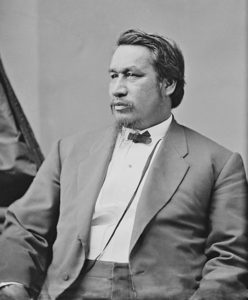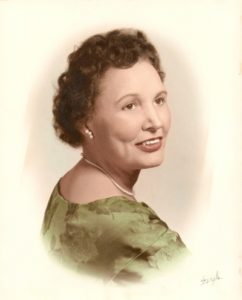November is Native American Heritage Month, so let’s celebrate some Native American Engineers!

Ely S. Parker (1828-1895) – Seneca, Civil and Military Engineer
Born in 1828 on the Tonawanda Indian Reservation, Ely S. Parker lived up to his Seneca name of Do-ne-ho-ga-wa, which means “Open Door.” When doors were closed to him because of his background, he found ways to open them. After unsuccessfully lobbying for the rights of his people to stay on their reservation, Parker began to study law in the hopes of advocating for the Seneca. However, when he applied for admission to the bar, he was denied because he was Seneca, and was therefore not considered a citizen in the eyes of New York State law (a law that would stand until the Indian Citizenship Act was passed in 1924).
Never one to wait for an opportunity, Parker began to study civil engineering at the Rensselaer Polytechnic Institute in Troy, NY. This gave him the skills to work on maintenance work for the Erie Canal, and eventually move to Galena, IL to work for the Treasury Department building a custom house and marine hospital. It was there that he became friends with Ulysses S. Grant. When the Civil War began, Parker gathered a group of Iroquois volunteers for the Union, but they were turned away by the Governor of New York, Edwin Morgan. Parker then attempted to enlist by himself as an engineer, but was again denied because of his race. Finally, Parker reached out to his friend Grant, who brought Parker onto his staff in 1963. He would go on to make major contributions at several battles, including Vicksburg, Chattanooga, and Petersburg, and would help in drafting the surrender documents at the Appomattox Court House in 1965.
After his military service, Parker became the first Native American to hold the office of Commissioner of Indian Affairs from 1869 to 1871. He would eventually return to engineering with a position in the New York City Police Department, where he served until 1895.

Mary Golda Ross (1908-2008) – Cherokee, Aerospace Engineer
Mary Golda Ross was born in 1908 and grew up in Park Hill, OK. A member of the Cherokee Nation, Ross grew up in a tradition that prized equal education for both boys and girls. Because of this, she was not intimidated by her surroundings when she entered male-dominated fields. She started college at the age of 16 at Northeastern State Teacher’s College in Tahlequah, OK where she studied mathematics. Following graduation, she would spend several years teaching math and science in rural Oklahoma, using her summers to attend classes at Colorado State College of Teaching where she was earned a master’s degree in mathematics in 1938.
In 1942 she was hired at Lockheed Aircraft Corporation as a computer where she completed complicated mathematical equations using only a pencil, paper, and slide rule, and was assigned to the team that designed the P-38 Lightning. After the war, many of the female computers were laid off and returned to their traditional roles. Ross had drawn special attention for her ambition and abilities, and as a result was kept on and began to take courses at the UCLA to earn her professional certification in engineering. This course included classes in math, engineering, and aeronautics. During peacetime, the Advanced Development Projects team with whom Ross worked, turned to loftier goals. Also known as Skunk Works, many of this team’s projects are classified even today. Ross was a founding engineer of this team, as well as the only woman besides the team’s secretary, and the only Native American. It is known that during this time Ross worked on the Space Race, developing preliminary requirements for spacecraft, which laid the groundwork for the Apollo program. While Ross always had a fascination with space and was an advocate for female astronauts she had little interest in being one herself. She said “I’d rather stay down here and analyze the data.”
Ross retired from Lockheed at the age of 65, but would work for many years to encourage women and Native Americans to enter STEM fields. In 2004 she was honored at the opening of the Smithsonian’s National Museum of the American Indian, which she attended wearing a traditional Cherokee dress that was made for her by her niece. She died in 2008, just three months shy of her 100th birthday.
Do you know some Native American engineers you think need some recognition? Drop them in the comments below!
Works Cited
Historical Society of the New York Courts. (2019, January 24). Ely S. Parker. https://history.nycourts.gov/figure/ely-parker/
Smith, Y. (2019, November 12). Mary Ross: A Hidden Figure. NASA. https://www.nasa.gov/image-feature/mary-ross-a-hidden-figure/
Vergun, D. (2021, November 19). Engineer became highest ranking Native American in Union Army. Www.Army.Mil. https://www.army.mil/article/252126/engineer_became_highest_ranking_native_american_in_union_army
Viola, H. (2018). Mary Golda Ross: She Reached for the Stars. NMAI Magazine. https://www.americanindianmagazine.org/story/mary-golda-ross-she-reached-stars
Wallace, R. (2021, November 19). Mary Golda Ross and the Skunk Works. The National WWII Museum | New Orleans. https://www.nationalww2museum.org/war/articles/mary-golda-ross-and-skunk-works
Watson, D. (n.d.). Biography of Ely S. Parker – Galena History Museum. Galena & U.S. Grant Museum. https://www.galenahistory.org/research/bio-sketches-of-famous-galenians/biography-of-ely-s-parker/